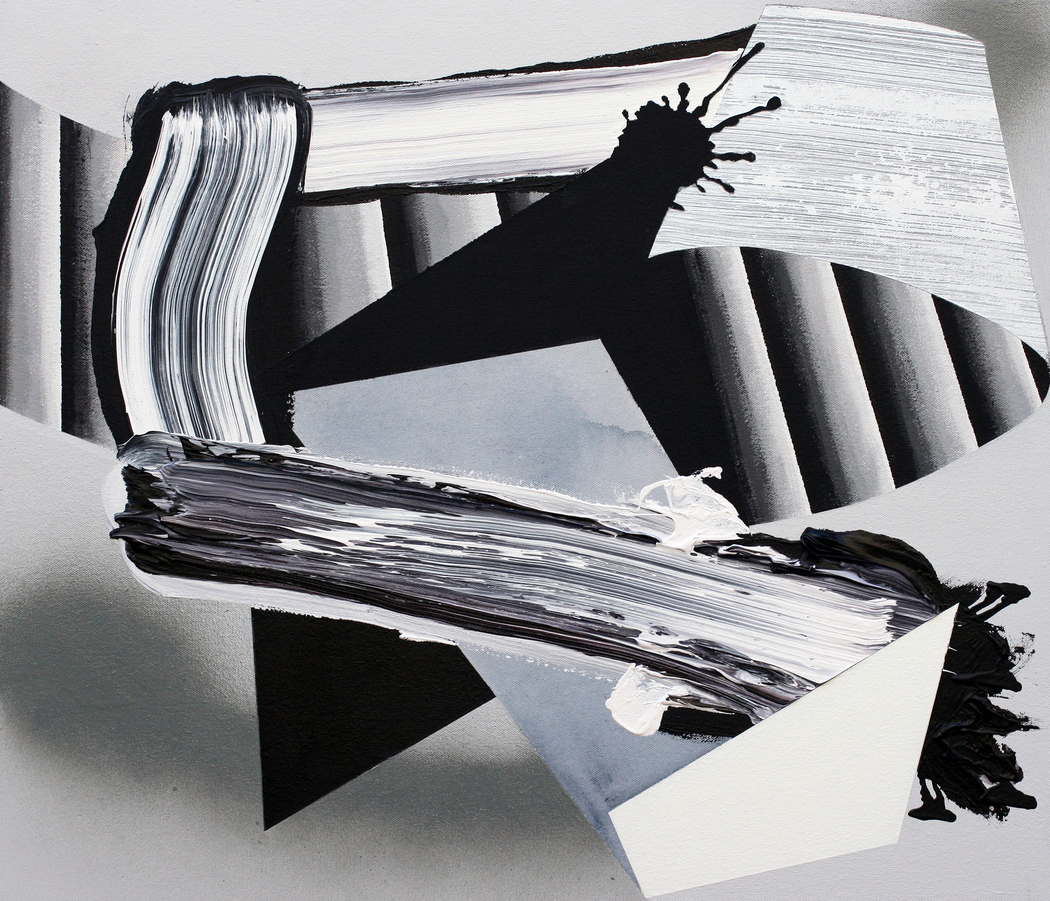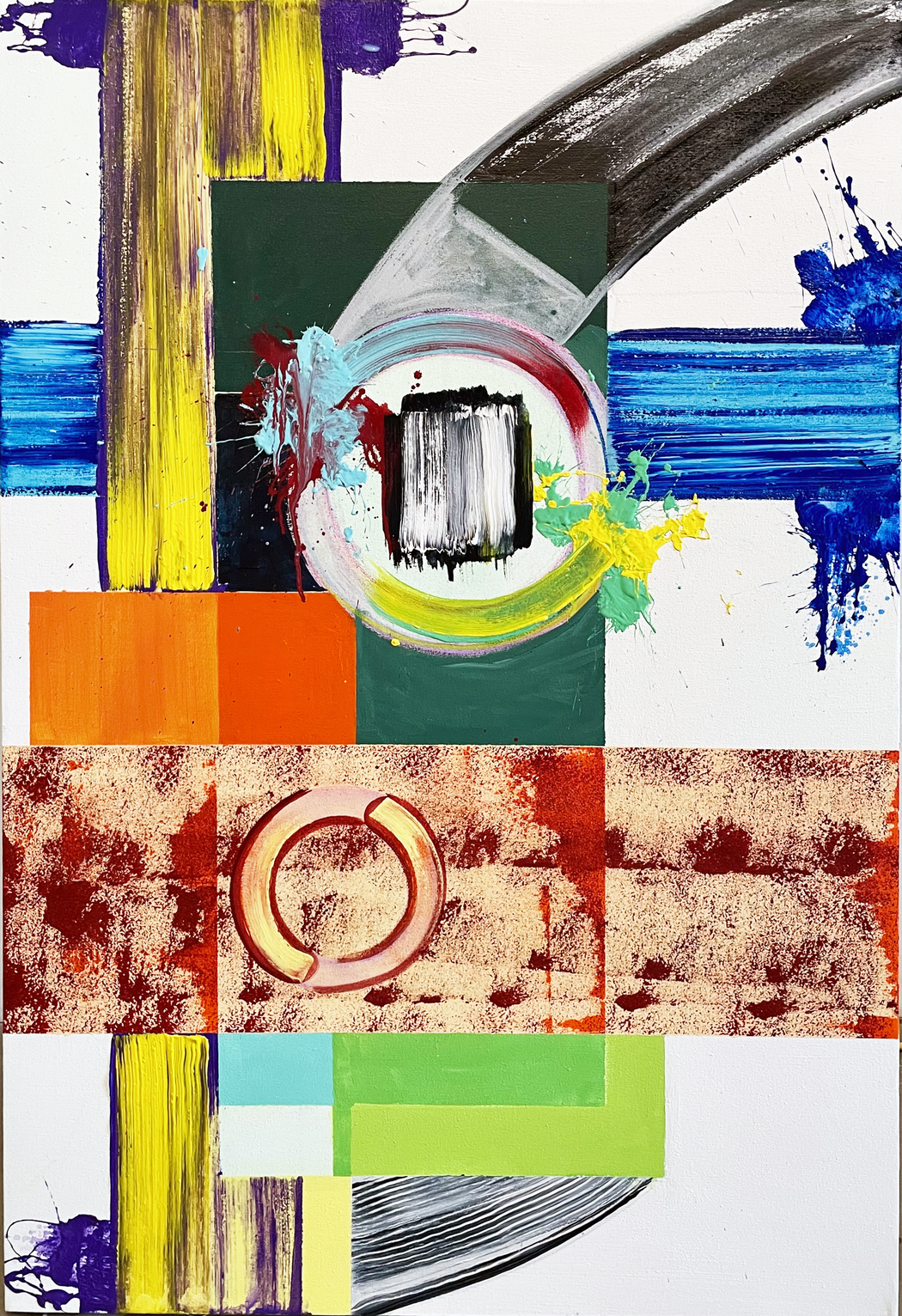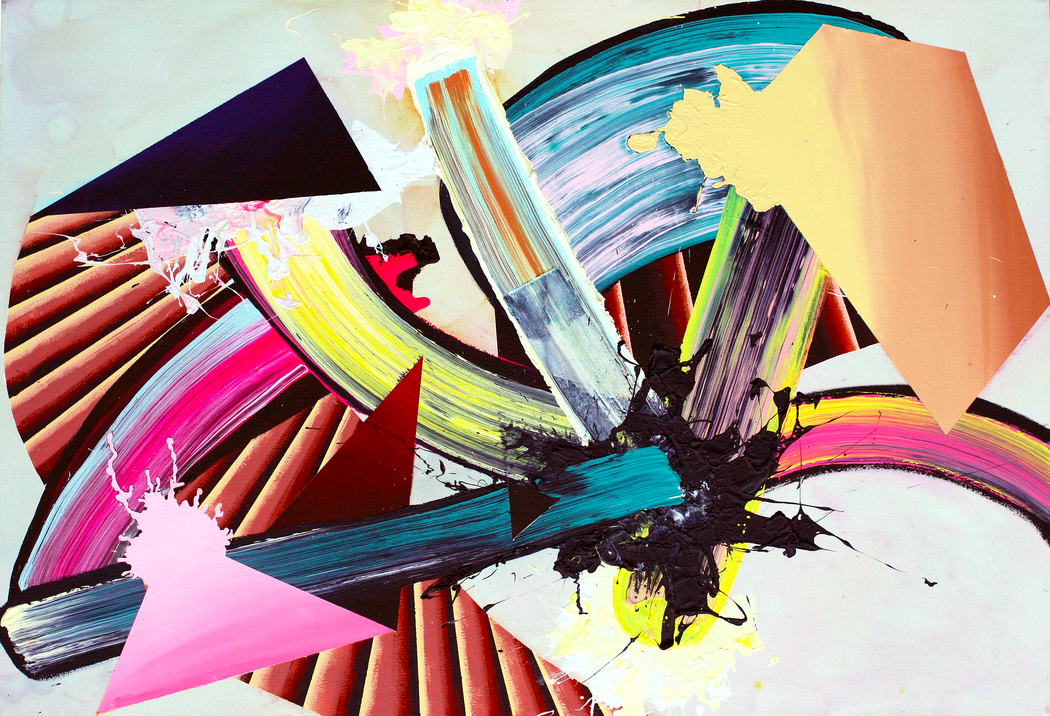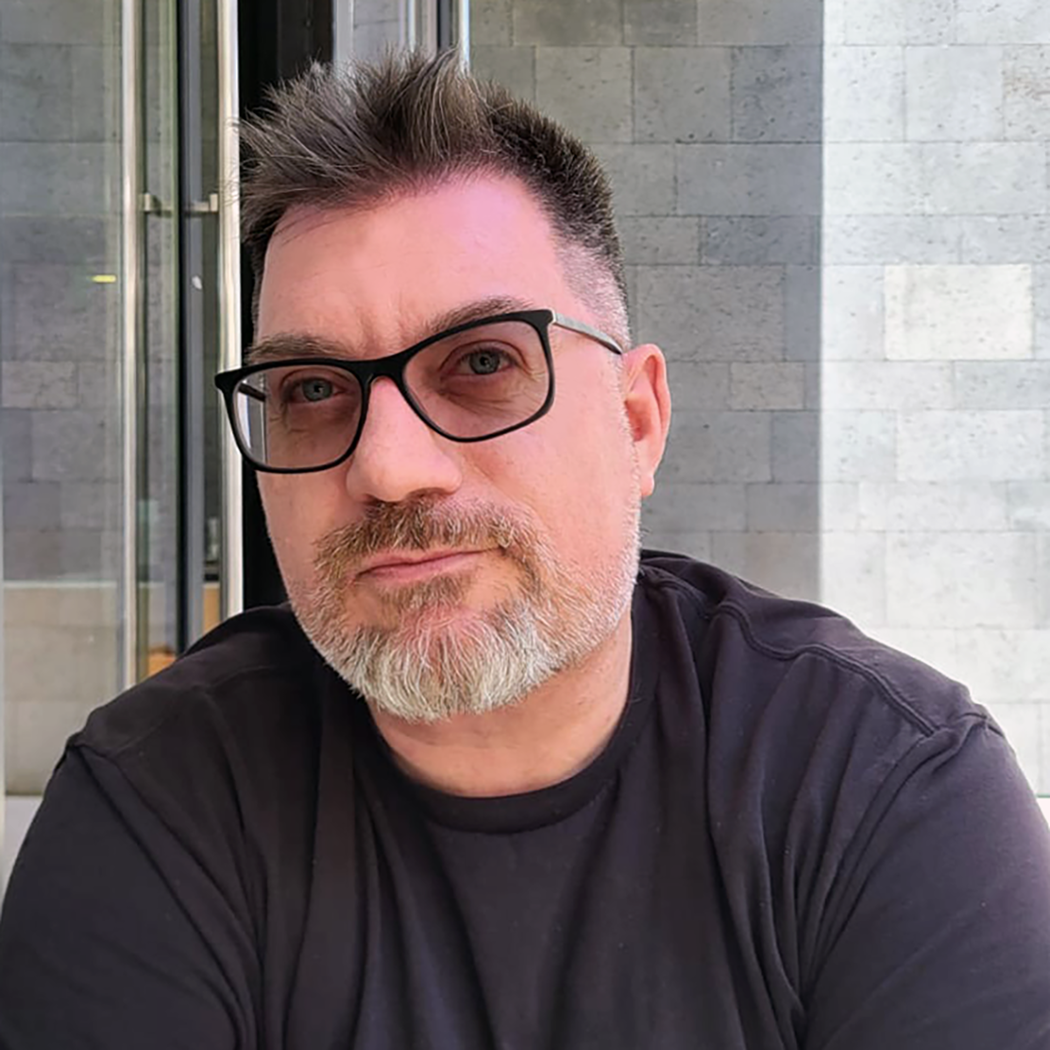Matt Sheridan
Year of birth: 1970.
Where do you live: Los Angeles, California.
Your education: BFA in Film & TV, New York University (Tisch School of the Arts); MFA in Graduate Art Studies, ArtCenter College of Design, Pasadena.
Describe your art in three words: Rematerialized, optical, tactilities.
Your discipline: Abstract digital collage, painting, and animation.
Website | Instagram
You refer to “a plug-and-play attitude” in your practice. Has this mindset allowed you more freedom, or are there limits you’ve discovered in this modular approach?
My plug-and-play attitude provides objectivity. I stick things together quickly, interchange parts, and ascertain three to five variations on a movement in short order. For me, modularity removes fussiness and adds speed, getting me out of my own way to discover each composition. Designing digital collages was the initial outcome of that methodology. New questions for animations and painting revealed themselves from that generative path forward. The only limitation is me.
Movement and gesture are central in your work. How do you choreograph visual rhythms without relying on traditional narratives or figures?
Starting in monochrome focuses me on action, reaction, collision, glances, obstructions and obfuscations, limiting myself to a series of discrete, interchangeable “moves.” When moves are associative, they’re relatable; demonstrating exchanges, transits, or in a vulgar sense, sex and/or violence.
Story and characters become superfluous to situations and characteristics: my paintings and animations exhibit plenty of available information to locate common feelings and attitudes between viewers’ perspectives and my own in the work. After visually setting terms for thought, telling audiences how to think about it is overkill in my opinion.
 Matt Sheridan | Humphrey Bogart | 2016
Matt Sheridan | Humphrey Bogart | 2016
You mention using scanned paint marks and re-materializing them digitally. Do you see this process as a form of collaboration between the physical and the virtual?
Oh yes. Due to my animation training, moving through, across and into an abstract painting with my eye, though satisfying, is often not enough for me. Physically painted textures and marks sequenced into animation exhibit organic, mechanical, transformative and chaotic frequencies, to name just a few.
Reverse-engineering this attitude into paintings, I choose color systems and textures based on a spectrum between harmony and dissonance. Mechanical implements beyond brushes get me there, using sprays, scrapes and scratches to build up textures on surfaces. Then my inquiries revert to projecting animations on rough surfaces! I seek to demonstrate actual material consequence rhythmically, rather than depicting textures using 3d software.
Your work blends elements of Constructivism, Abstract Expressionism, and digital animation. How do you navigate the tension between structure and spontaneity in your creative process?
For an art historical angle on my “why,” I’m thinking about painting and video by way of Helio Oiticica / Nam June Paik framing Franz Kline / Kazuo Shiraga / Sam Gilliam / David Reed as organized by El Lissitzky / Aleksander Rodchenko / Pipilotti Rist. I am thinking globally, while figuring out how my influences interact in time and space as fragments organized together from project to project.
Where prior abstract artists insisted upon their practices’ supremacy over others, I use abstraction to address questions which in turn, generate more questions, moving my practice forward.
 Matt Sheridan | Cyclops | 2024
Matt Sheridan | Cyclops | 2024
You describe abstract painting as the “R&D wing” of your practice. Can you walk us through how a single gesture might evolve from canvas into a projected animation?
All my work begins as digital collage. My collages are sketches or demos from which I can build out / rematerialize performances over time on canvas or animated videos. As I paint and build surfaces, I wonder how those surfaces might move as animations, which is the research and development part, as well as testing color systems.
So I’ll repeat a gesture in, for example, a sequence of 12-15 positions, as it grows and dissipates, on a scannable sheet of paper. Then I digitally clean up and sequence those positions into cycles, including but not limited to a beginning, middle and end.
From there I apply a color system, at which point loops are composited together, either nested into a larger, pre-conceived multi-component cycle designed for a particular shape / site, or mixed live using video jockey software, live “painting” in real time before a live audience recorded for cinematic editing.
How have residencies in places like Brazil, Japan, and France shaped your understanding of abstraction or altered your visual language?
Really what I learn on residencies are local philosophies, both what they have in common with western continental philosophy, and how they diverge from it. Contemporary and modern art exhibitions in France illuminate our world’s universally fragmentary condition as a century-long spectrum using space and time in ways American market-driven, narratively decorative painting and reductive identity politics-driven polemics seek to gloss over in deference to American narcissisms.
Japan and Brazil also prioritize culture, in that art is everywhere in both places, from temples and vending machines to boats and dances in each respective country.
Brazilian baroque syncretism, Japanese wabi-sabi essentialism, and the elegant brutality of the French are all visible in my work.
My interest in dialectics — and particularly intersections — between global philosophies inspires me to abstractly demonstrate these exchanges in my work, which is why I’m collaborating with artists in Mumbai this summer 2025.
 Matt Sheridan | Scissoring | 2016
Matt Sheridan | Scissoring | 2016
Your work has appeared at prestigious venues like the Centre Pompidou and in public installations. How does the scale or environment influence your compositional choices?
Sites frame the work: this is tricky because ideally my work can move from site to site while being bespoke to each. In group contexts I want my animations to “hang” with paintings and sculptures, as smaller projections or as monitor-based works, not isolated in a black box. I like when my work converses with other works in the room.
Sometimes a curatorial program, sporting event or festival requests a single-channel cinematic edit for a theatrical screen presentation. Sometimes there’s an interior or exterior facade, even a protruding corner of a building. Building facades provide interesting shapes and surface “traction” for projection, whether as bricks or slats or overpainted surfaces.
Sometimes there’s so much traction a surface becomes “slippery” to a projected image – many southern California interior ceilings are already beautiful and multi-layered with constructed textures and movement, making a hostile environment where projected adornment is redundant and unnecessary. Likewise, a white cube can be slippery as there’s no context beyond what else is installed on the walls or floor, so I’ll either project a shape surrounded by transparency or go fully immersive from floor to ceiling to ends of the walls.
I participated in a New Delhi group show where my immersive work was projected as a shape in the main gallery with paintings and sculptures, only possible because the projection area was recessed, making my work “proportionate” to other works nearer the viewer. Ideally my work is not only an optical experience, but also a bodily excursion engaging instinct as well.


Leave a Reply